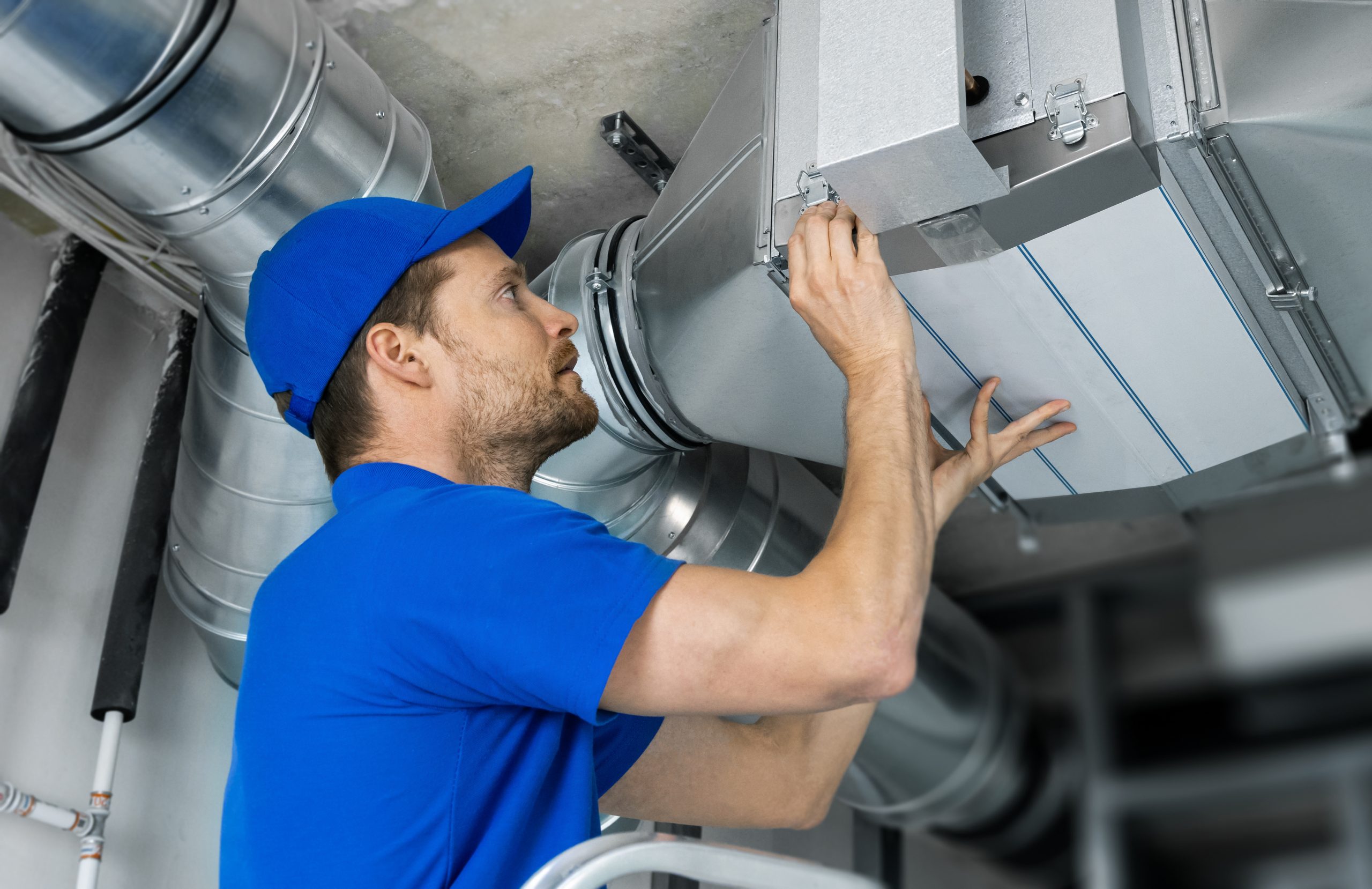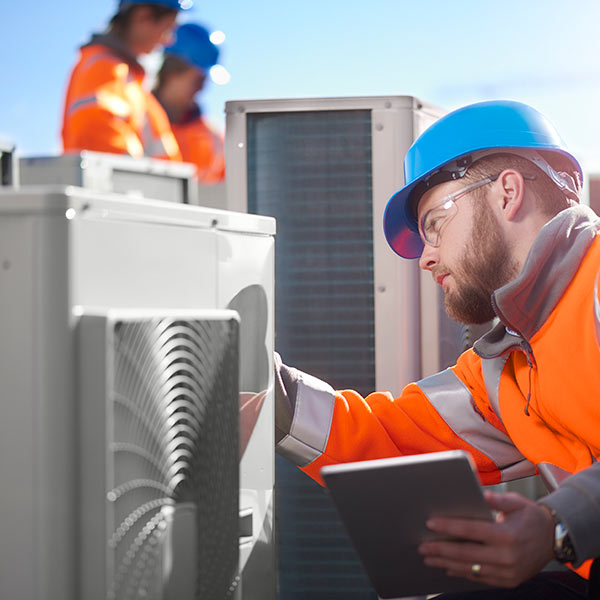A Complete Guide to Installing ductless mini splits in Any Home Type
A Complete Guide to Installing ductless mini splits in Any Home Type
Blog Article
How a Warm Pump and Heater Interact to Optimize Your Home's Home heating Efficiency
Comprehending how a warm pump and heater collaborate is essential for homeowners seeking effective home heating options. Each system has its toughness, supplying a balanced approach to home comfort. The warm pump stands out in modest temperature levels, while the furnace provides quick heat throughout severe cold. This synergy not just lowers energy costs however additionally improves the life-span of both home appliances. What aspects affect this partnership, and how can homeowners optimize their benefits?
Understanding Warmth Pumps: How They Work
Lots of individuals might be unknown with their inner workings, warm pumps play a necessary role in modern heating systems. These tools operate by transferring warm from one place to another, using the concepts of thermodynamics. In cooler months, a warm pump essences warmth from the outdoors air, ground, or water, and transfers it indoors to warm up the space. Alternatively, during warmer months, it can reverse the procedure, working as an air conditioning system by removing warmth from inside to the outside.Heat pumps include an evaporator, compressor, growth, and condenser valve. The cooling agent within the system takes in warmth as it evaporates at reduced temperatures and stress. The compressor then raises the stress and temperature level of the cooling agent, permitting it to release warmth as it condenses. This efficient process can considerably lower power consumption contrasted to standard heating approaches, making heat pumps a sustainable selection for climate control in homes.
The Function of Heating Systems in Home Heating
Furnaces play a vital duty in home heating by offering a reliable resource of heat during the cooler months. They operate by producing warm with combustion or electric resistance, distributing it throughout the home by means of air ducts or glowing systems. The efficiency of a heating system is often determined by its Yearly Gas Usage Effectiveness (AFUE) ranking, which shows how successfully the device transforms gas right into heat.Furnaces can use numerous power sources, including gas, gas, oil, or electrical power, permitting house owners to choose one of the most suitable choice for their needs. Unlike warmth pumps, which may battle in severe chilly, furnaces maintain consistent performance, ensuring that indoor temperature levels stay comfy no matter outdoor problems. Additionally, contemporary heating systems commonly come equipped with advanced modern technology, such as clever thermostats and variable-speed blowers, improving their effectiveness and responsiveness. This convenience makes heating systems an essential component in all-encompassing home heating strategies.

Benefits of Utilizing Both Systems Together
Incorporating the strengths of both heating systems and heatpump can bring about an extra effective and reliable home heating remedy. Using both systems enables house owners to capitalize on the heatpump's energy performance throughout milder temperature levels while relying upon the heating system for more severe cold problems. This double approach can substantially minimize energy expenses, as warm pumps eat less electrical power than traditional home heating techniques when temperature levels are moderate.Additionally, using both systems with each other can improve convenience degrees in the home. Warmth pumps can supply constant, even home heating, while heaters can quickly raise ambient temperature levels when required. The combination of both systems can extend the life-span of tools by decreasing wear and tear on each device, as they share the workload. Eventually, homeowners can appreciate a balanced, affordable heating solution that changes flawlessly to varying weather condition problems, making sure a cozy and inviting home throughout the winter season.
Just How Heat Pumps and Furnaces Complement Each Other
They develop a complementary home heating system that makes the most of performance and comfort when house owners incorporate warm pumps and heaters. Heatpump operate by transferring warmth from the outdoors air or ground, making them highly efficient in moderate environments. They stand out throughout milder temperature levels, supplying cost-efficient home heating. Conversely, heaters create warmth via burning or electrical resistance, delivering strong, immediate warmth throughout extreme chilly conditions.The combination of these two systems enables for vibrant adjustments based on temperature level variations. Throughout warmer months or milder winter months days, the warm pump can take the lead, conserving energy and lowering costs. As temperature levels decline, the heating system can perfectly engage, guaranteeing consistent heat throughout the home. This synergy not just optimizes power usage but likewise improves the life expectancy of both systems, as each system operates within its excellent efficiency variety. Together, they develop a well balanced setting that adapts to differing environment needs.
Maximizing Performance: Tips for Homeowners
Homeowners can boost their heating efficiency with a number of useful methods. Establishing a routine maintenance schedule, incorporating wise thermostat innovation, and applying reliable insulation and securing solutions are essential actions. These measures not only improve convenience but additionally decrease power prices.
Normal Upkeep Schedule
To ensure maximum heating efficiency, establishing a normal maintenance timetable is necessary for any kind of home. Homeowners must focus on routine examinations of both heatpump and heaters to determine peak efficiency. This consists of altering air filters each to three months, as stopped up filters can greatly lower performance. In addition, organizing expert maintenance a minimum of check out this site yearly permits specialists to recognize and address potential problems prior to they rise. Property owners must also clean the heatpump's outside device to stop particles build-up that can prevent air flow. By sticking to a routine upkeep timetable, home owners not just boost their furnace' efficiency however also prolong their lifespan, causing higher comfort and minimized power prices throughout the chillier months.
Smart Thermostat Assimilation
Integrating a smart thermostat into a home heating unit can significantly boost energy performance, especially as it permits precise control over temperature level setups. These devices can find out the home owner's routine and preferences, automatically adjusting the temperature level to optimize convenience while lessening energy usage. For instance, they can decrease home heating throughout times when the home is unoccupied, reducing unnecessary consumption. Many clever thermostats also offer real-time power usage information, making it possible for homeowners to make informed choices about their home heating routines. In addition, remote gain access to by means of smart device applications enables individuals to change settings from anywhere, ensuring the home is warm upon return. Overall, clever thermostat combination not just improves convenience but substantially adds to power savings and efficiency.
Insulation and Sealing Solutions
Smart thermostats play a vital role in power efficiency, yet their effectiveness can be substantially enhanced by appropriate insulation and securing services. House owners need to focus on shielding attic rooms, floorings, and walls to minimize heat loss. Top notch insulation products, such as spray foam or fiberglass, can greatly improve thermal resistance. In addition, securing voids around air ducts, doors, and windows prevents cool air seepage and warmth getaway. Weatherstripping and caulking work techniques for attending to these leakages - heat pump service. Routine assessments for air leaks, together with using blower door tests, can help determine trouble locations. By investing in insulation and securing, house owners can maximize the performance of their heater, ultimately resulting in minimized energy usage and lower utility expenses
Common Misconceptions Concerning Warm Pumps and Furnaces
What misconceptions surround warmth pumps and heating systems? Several people mistakenly believe that heatpump are inefficient in cooler climates. Actually, contemporary warm pumps are made to operate efficiently also in reduced temperatures, supplying trusted heating throughout wintertime. An additional usual misconception is that furnaces are constantly much more efficient than heatpump. Nevertheless, this depends on the particular energy resources and efficiency rankings of the systems in question. Some may additionally assume that making use of both systems all at once is unneeded, but in reality, this combination can optimize home heating effectiveness, specifically during extreme climate conditions. Furthermore, individuals frequently think that heatpump need constant upkeep, when in reality, they have comparable maintenance needs to standard heating systems. By debunking these misconceptions, property explanation owners can make even more informed choices concerning their home heating options, eventually resulting in improved comfort and power performance in their homes.
Maintenance Considerations for Combined Solutions

Regularly Asked Inquiries
Can Heat Pumps Work Properly in Very Cold Climates?
Heatpump can struggle in exceptionally chilly environments because of reduced effectiveness and warmth removal restrictions. Innovations in innovation have actually led to designs designed for better performance in such conditions, improving their practicality in extreme settings.
For How Long Do Warmth Pumps and Furnaces Commonly Last?
Warmth pumps commonly last 15 to 20 years, while furnaces have a lifespan of 15 to thirty years. Routine maintenance can extend their longevity, making sure reliable procedure and lowering the demand for early substitutes.

What Is the Typical Price of Setting Up Both Systems?
The average price of setting up both a warm pump and a heating system typically varies between $5,000 to $10,000 - heat pump installation ooltewah tn. Variables affecting this cost consist of system dimension, installment intricacy, and local labor prices
Are There Tax Rewards for Making Use Of Energy-Efficient Home Heating Equipments?
Numerous click to read home owners ask about tax rewards for energy-efficient heating unit. Numerous federal and state programs frequently supply credit scores or rebates, motivating the fostering of sustainable innovations to minimize power intake and advertise ecological obligation.
Just how Do I Pick the Right Dimension Heatpump and Heating System?
Picking the right size heat pump and heating system includes determining the home's square footage, thinking about insulation high quality, and reviewing neighborhood environment. Consulting an expert can ensure ideal system efficiency and energy efficiency based on certain needs. heat pump installation ooltewah tn. Recognizing exactly how a warm pump and heating system work with each other is vital for house owners seeking effective heating services. In cooler months, a heat pump essences warmth from the outdoors air, ground, or water, and transfers it inside your home to warm the living room. When property owners integrate heat pumps and furnaces, they develop a corresponding home heating system that optimizes performance and convenience. Warm pumps operate by moving warm from the outdoors air or ground, making them very effective in moderate environments. Warm pumps can have a hard time in very chilly climates due to lowered effectiveness and heat extraction limitations
Report this page